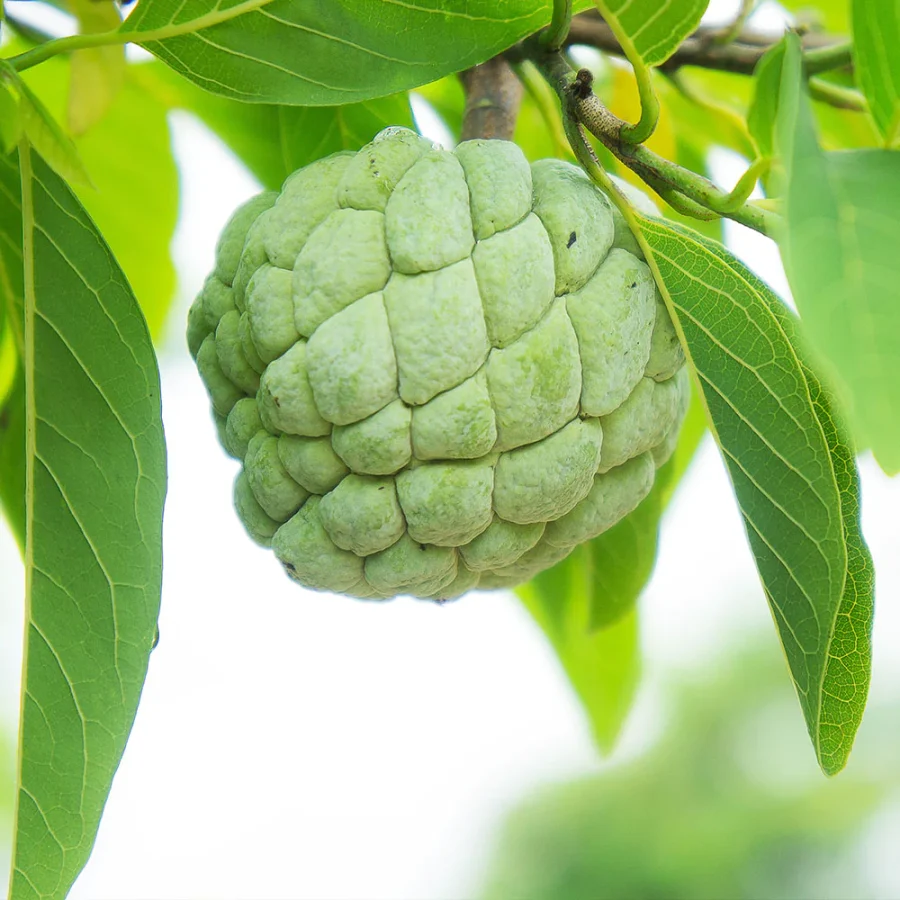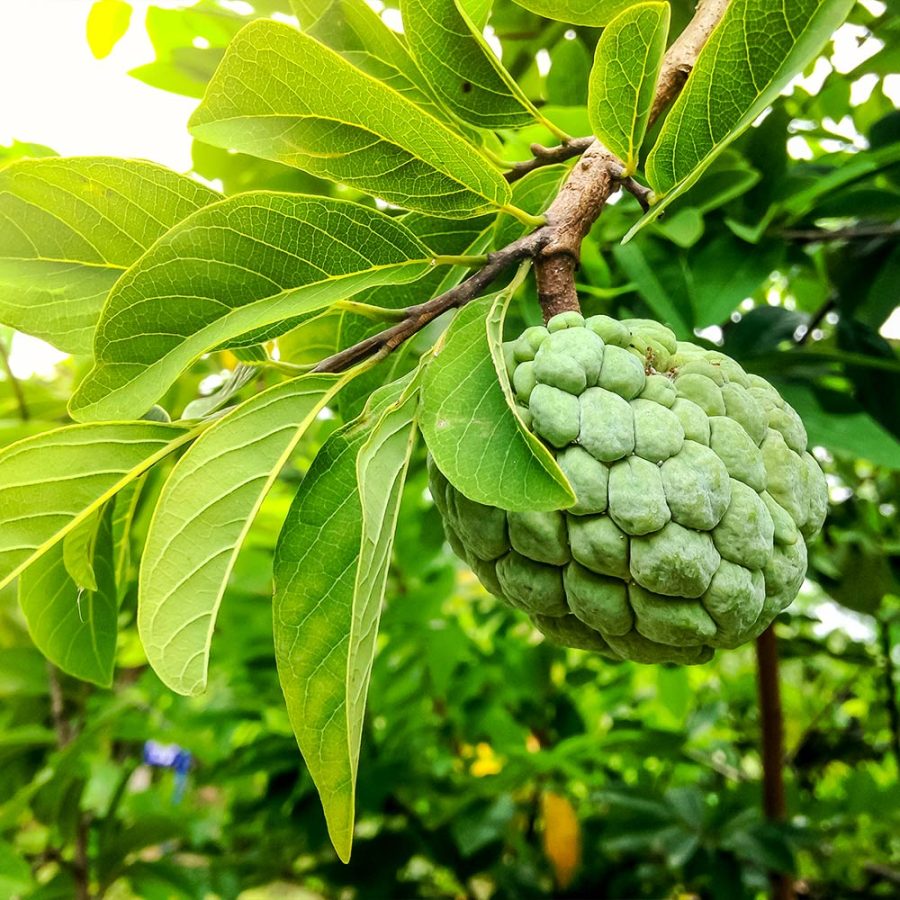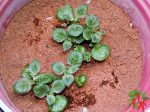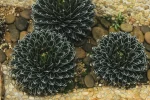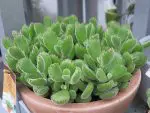This post contains affiliate links. If you buy something from one of our links we may earn a commission. Thanks
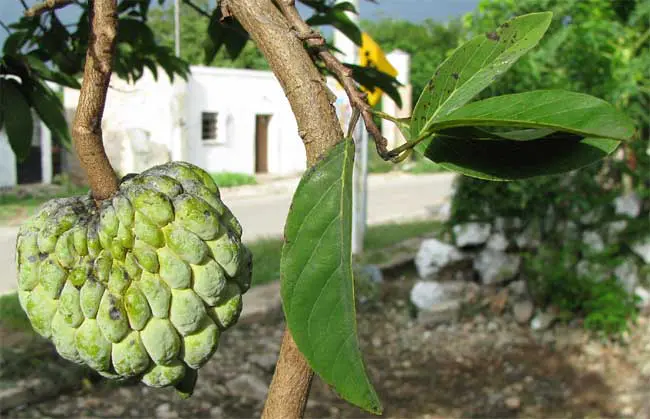
Discover how to grow Sugar Apple from seed with our easy-to-follow guide. Enjoy sweet, custard-like fruits by nurturing your very own Sugar Apple tree!
Annona squamosa, commonly known as Sugar Apple, thrives in well-drained soil and a warm, sunny environment. It requires moderate watering and benefits from regular fertilization during the growing season. For best fruit production, hand-pollination may be necessary. The plant is best suited for USDA zones 10-11.
Have you ever wanted to enjoy the sweet, custard-like taste of Sugar Apples right in your own home or backyard?
Well, you’re in luck! In this comprehensive guide, we’ll walk you through the process of how to grow Sugar Apples from seed.
With a little patience and care, you’ll soon be harvesting your very own delicious Sugar Apples, perfect for enjoying on a sunny afternoon or sharing with friends and family.
So, let’s get started and turn your garden into a Sugar Apple paradise!
Introduction To The Sugar Apple Tree
The Sugar Apple tree is a delightful and exotic addition to any indoor garden!
If you’re intrigued by this tropical gem, you’re in for a treat. In this section, we’ll introduce you to the Sugar Apple tree, a close relative of the custard apple, and highlight its unique features and scrumptious fruit.
Growing these beauties indoors in containers will not only bring a touch of the tropics to your home but also supply you with an alluring conversation starter.
So, let’s dive in and learn more about this fascinating plant!
Getting to Know the Sugar Apple (Annona squamosa)
The Sugar Apple, also known as sweetsop, is an edible fruit that comes from the Annona squamosa tree.
This tree is native to tropical climates in the Americas and West Indies, but it’s also widely grown in Asia, thanks to Spanish traders who introduced it to the Philippines.
The Sugar Apple fruit has a unique, segmented appearance, with a thick rind made of knobby segments. Its color varies from pale green to blue-green, and when ripe, the segments tend to separate, revealing the delectable flesh inside.
Sugar Apple vs Custard Apple: Spotting the Difference
You might be wondering about the difference between the Sugar Apple and the Custard Apple.
While they’re closely related and often confused, they do have some distinctions. Custard apple is a general term for fruits from the Annona genus, which includes Sugar Apple (Annona squamosa) and cherimoya (Annona cherimola), among others.
The main difference lies in their taste and appearance. Sugar Apples have a unique segmented appearance, while cherimoyas have a smoother skin.
Both fruits have a sweet, custard-like taste, but Sugar Apples are slightly grainier and slipperier in texture.
Acquiring Sugar Apple Seeds
Now that you’re familiar with the Sugar Apple tree and its many benefits, you’re probably eager to start growing your own.
The first step in this exciting journey is acquiring Sugar Apple seeds. In this section, we’ll explore different ways to obtain seeds, whether it’s from a ripe Sugar Apple, purchasing online, or finding a healthy young tree at a nursery.
With a little guidance, you’ll soon be on your way to nurturing your very own Sugar Apple tree right in the comfort of your home!
You can find Sugar Apple seeds here.
Harvesting Seeds from a Ripe Sugar Apple
One way to get your hands on Sugar Apple seeds is by harvesting them from a ripe fruit.
To do this, simply pick a ripe Sugar Apple and gently break it open, revealing the creamy white or light yellow flesh inside.
You’ll notice individual segments, each containing seeds that are about 13 to 16 millimeters long.
Carefully remove the seeds and rinse them to remove any remaining fruit pulp.
Once clean, let them dry completely before moving on to the planting stage. Don’t forget to enjoy the sweet, custard-like fruit while you’re at it!
Buying Sugar Apple Seeds Online or at a Nursery
If you don’t have access to a ripe Sugar Apple, don’t worry! You can easily purchase Sugar Apple seeds online or at your local nursery.
Many gardening websites and stores offer a selection of Sugar Apple seeds, often with detailed information on the specific variety you’re purchasing.
You can buy your Sugar Apple tree here.
When buying seeds, make sure to choose a reputable seller to ensure the best chance of success in growing a healthy Sugar Apple tree.
Finding a Healthy Sugar Apple Tree for Sale
For those who prefer a head start in the Sugar Apple growing journey, consider purchasing a young Sugar Apple tree from a nursery or garden center.
When selecting a tree, look for one with healthy foliage, strong branches, and no visible signs of pests or diseases.
A healthy young tree will give you a head start in the growing process and shorten the time it takes to enjoy your first home-grown Sugar Apple fruit.
Just be sure to select a suitable container and follow proper planting and care instructions to help your new tree thrive.
Sugar Apple Tree For Sale
The Sugar Apple tree, also known as the Annona squamosa is a unique tropical tree that’s the clear winner amongst its competition because it produces a distinctive fruit with an individual look and tropical flavor that blows people away.
Sugar Apples taste like a sweet vanilla custard with a hint of pineapple. Its smooth and slightly grainy texture makes this fruit a delight to snack on.
While most Sugar Apples are eaten fresh, they can also be used in desserts and for making juices.
Sugar Apples, often referred to as sweetsops, have a unique shape, similar to a heart, and light green skin that’s divided up into sections.
Its conical nature causes the fruit to look like a green pinecone at first, but since the fruit is split among different sections it’s very easy to split apart and eat fresh, right off the tree.
Once you pull your Sugar Apple apart you’ll find soft and creamy flesh on the inside that’s divided into sections.
Simply pick out the white flesh sections one by one and eat them for a rush of rich tropical flavors.
You don’t have to live without Sugar Apple trees, because they will grow anywhere in containers.
They’ll give your landscape a lush tropical feel if planted in the ground, and they also thrive in containers.
They can be placed around porches, patios, and inside any room to liven it up with their long and slender exotic leaves.
Sugar Apple Trees produce an irresistible fruit that people can’t wait to try. They’re selling out fast, so we recommend ordering your Sugar Apple today before they are all gone.
| Mature Height: | 10-20 ft. |
| Mature Width: | 10-20 ft. |
| Sunlight: | Full Sun |
| Growth Rate: | Moderate |
| Botanical Name: | Annona squamosa ‘NaDai’ |
| Does Not Ship To: | AZ |
| Grows Well In Zones: | 4-11 patio / 9-11 outdoors |
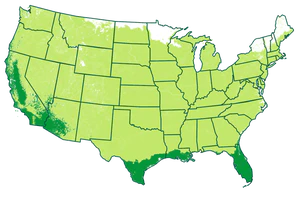
Sugar Apple Nutrition
The Perks of Sugar Apples: Nutritional Value and Uses
Aside from their delightful taste, Sugar Apples also pack a punch when it comes to nutrition.
They’re high in energy, an excellent source of vitamin C and manganese, and a good provider of thiamine and vitamin B6.
Additionally, Sugar Apples contain fair amounts of vitamins B2, B3, B5, B9, iron, magnesium, phosphorus, and potassium.
With all these nutrients, it’s no wonder Sugar Apples are a popular choice for a tasty and healthy snack.
Beyond their nutritional benefits, the seeds of the Sugar Apple can also be ground and used as an insecticide, making this fruit even more versatile and useful in various applications.
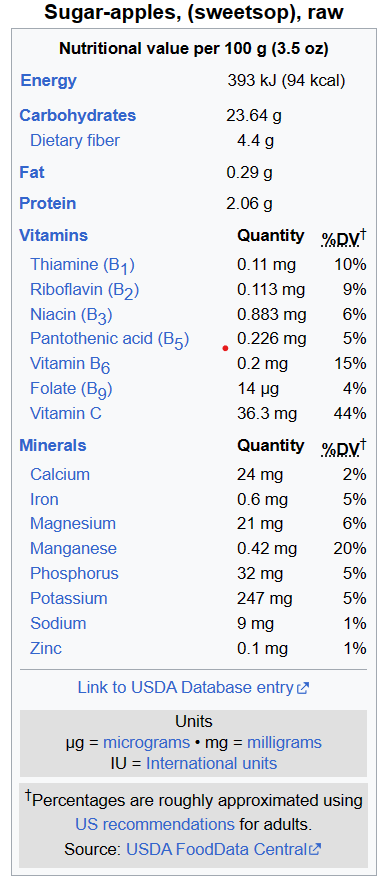
Planting and Germinating Sugar Apple Seeds
Alright, now that you’ve got your Sugar Apple seeds, it’s time for the real fun to begin!
In this section, we’ll guide you through the process of planting and germinating your seeds, ensuring they get off to the best possible start.
With some patience and attention to detail, you’ll soon see your little seeds transform into thriving Sugar Apple seedlings, ready to grow into lush, fruit-bearing trees.
So, let’s roll up our sleeves and get those seeds in the soil!
Prepping Your Seeds for Planting
Before you get started with planting, it’s essential to prepare your Sugar Apple seeds for the best chance at successful germination.
Begin by soaking the seeds in room temperature water for 24 hours to help soften the seed coat, which in turn aids germination.
After soaking, drain the seeds and gently pat them dry with a paper towel.
Selecting the Right Soil Mix and Container with Coco Coir
Next, you’ll need to choose the right soil mix and container for your Sugar Apple seeds.
Since Sugar Apple trees prefer well-draining soil, consider using a mix that contains coco coir.
Coco coir is an excellent medium for promoting root growth and maintaining proper moisture levels.
Combine it with perlite and some organic compost to create the ideal environment for your seeds.
As for the container, opt for a small pot or seed tray with drainage holes to prevent waterlogging.
Make sure the container is large enough to accommodate the initial growth of your Sugar Apple seedlings but not too large as it could remain wet for too long after watering.
A 2-3 inch container is a good place to start your seedlings.
Planting Depth and Spacing
When it’s time to plant your seeds, you’ll want to get the depth and spacing just right.
Place the seeds about half an inch to one inch deep in the soil if using individual containers, and space them about two to three inches apart if using a tray.
This will give the seedlings ample room to grow and develop without competing for nutrients and space.
Germination Conditions and Timeline
To encourage successful germination, place your newly planted seeds in a warm, well-lit area.
Sugar Apple seeds typically germinate best at temperatures between 70 and 85 degrees Fahrenheit.
Keep the soil consistently moist but not soggy, as excessive moisture can lead to seed rot.
Be patient. With proper care and attention, you should start to see sprouts emerge within two to four weeks.
Once your Sugar Apple seedlings have a few sets of leaves, they’ll be ready for transplanting to a larger pot or their final indoor container.
Caring for Sugar Apple Seedlings
Congratulations! Your Sugar Apple seeds have sprouted, and you’re now the proud caretaker of some adorable little seedlings.
In this section, we’ll guide you through the essential steps to ensure your Sugar Apple seedlings grow up strong and healthy, eventually producing those mouth-watering fruits you’ve been dreaming of.
From proper watering to ideal lighting conditions, we’ve got you covered. Let’s nurture these tiny seedlings into flourishing Sugar Apple trees together!
Meeting Watering, Sunlight, and Temperature Needs
Caring for Sugar Apple seedlings requires attention to their watering, sunlight, and temperature needs.
These seedlings love consistent moisture, so water them regularly, ensuring the soil stays moist but not waterlogged.
Drainage is key, so avoid letting your plants sit in standing water.
Sugar Apple seedlings thrive in bright, indirect sunlight, so place them near a sunny window or under grow lights.
As for temperature, maintain a range between 70 and 85 degrees Fahrenheit to keep your seedlings happy and healthy.
Fertilization and Nutrient Essentials
To support robust growth, it’s important to provide your Sugar Apple seedlings with the necessary nutrients.
Start by using a balanced, slow-release fertilizer, following the manufacturer’s instructions for frequency and dosage.
As your seedlings grow, consider supplementing their diet with organic matter like well-aged compost or worm castings.
This will help ensure your plants receive all the nutrients they need to develop strong roots, lush foliage, and eventually, delicious fruit.
Transplanting Seedlings to a Larger Pot
Once your Sugar Apple seedlings have developed a few sets of true leaves, it’s time to transplant them to a larger pot.
Choose a container that’s at least twice the size of the current one, with ample drainage holes to prevent waterlogging.
Fill the new pot with a well-draining soil mix, like the one you used for germination, and carefully transfer your seedlings to their new home.
Be sure to handle them gently, avoiding damage to their delicate roots.
After transplanting, continue to monitor their watering, sunlight, and nutrient needs to help your Sugar Apple trees flourish.
Growing Sugar Apple Trees: Maintenance and Tips
You’ve made it this far, and your Sugar Apple seedlings are well on their way to becoming magnificent trees.
In this section, we’ll share some essential maintenance tips and tricks to help you keep your Sugar Apple trees thriving, whether they’re still in pots or have found a permanent home in your garden.
From pruning practices to pest control, we’ll equip you with the knowledge you need to ensure your trees grow strong and produce a bountiful harvest of delectable Sugar Apples.
Let’s dive in and learn how to keep these tropical beauties at their best!
Understanding Mature Sugar Apple Tree Dimensions
As your Sugar Apple trees grow, it’s important to have an idea of their mature size to plan your indoor or outdoor space accordingly.
A fully grown Sugar Apple tree can reach a height of 10 to 20 feet and a similar spread.
If you’re growing your tree in a container, you can manage its size through regular pruning and by choosing a pot that limits its growth.
Having a clear understanding of your tree’s mature dimensions will help you provide the ideal environment for it to flourish.
Pruning and Shaping for Optimal Growth
Pruning and shaping your Sugar Apple tree play a crucial role in promoting optimal growth and fruit production.
Regularly remove dead or damaged branches and any growth that appears weak or crowded.
Prune your tree to maintain an open canopy, which allows sunlight to penetrate and air to circulate, reducing the risk of diseases.
Shaping your tree to maintain a manageable size and form is particularly important for indoor container growth.
By keeping your tree properly pruned and shaped, you’ll encourage robust growth and a healthy harvest.
Pest and Disease Management
Keeping your Sugar Apple tree healthy also involves managing pests and diseases.
Some common pests that may affect your tree include aphids, mealybugs, and scale insects.
If you notice any of these pests, consider using organic insecticides like neem oil or insecticidal soap to control their populations.
As for diseases, Sugar Apple trees can be susceptible to fungal issues, particularly if they’re exposed to overly wet conditions.
To minimize the risk of fungal infections, ensure proper air circulation, avoid overwatering, and maintain a clean growing environment.
With a proactive approach to pest and disease management, you’ll help your Sugar Apple tree stay healthy and fruitful.
Harvesting Sugar Apples
After all your hard work and patience, the moment you’ve been waiting for has finally arrived. It’s time to harvest those delicious Sugar Apples!
In this section, we’ll discuss how to determine when your Sugar Apples are ripe and ready for picking, as well as some tips on how to store and enjoy your homegrown bounty.
Get ready to savor the sweet, creamy fruit of your labor and discover the joy of harvesting Sugar Apples from your very own tree.
Let’s explore the exciting world of Sugar Apple harvesting together!
Sugar Apple Season: When to Expect Fruit
One of the first things to know about harvesting Sugar Apples is the season when they typically bear fruit.
Sugar Apple trees usually produce fruit during the summer months, with the exact timing varying depending on your climate and the specific variety you’re growing.
Keep a close eye on your tree during this period, as the fruits can ripen quickly and you don’t want to miss out on their peak flavor.
From Seed to Harvest: How Long It Takes to Grow Sugar Apples
Growing Sugar Apples from seed can be a rewarding process, but it requires patience.
It generally takes about 3 to 4 years for a Sugar Apple tree grown from seed to reach maturity and start producing fruit.
However, this timeline can vary depending on factors like growing conditions, tree variety, and the care provided.
By nurturing your Sugar Apple tree with proper care and attention, you’ll be well on your way to enjoying a bountiful harvest.
Identifying Ripe Sugar Apples and Proper Harvesting Techniques
To enjoy the full flavor and sweetness of Sugar Apples, it’s crucial to harvest them at the right time.
A ripe Sugar Apple will have a slightly soft texture and its skin will change from a pale green to a slightly yellowish-green hue.
Additionally, the fruit’s segments will start to separate slightly, revealing the creamy flesh within.
To harvest, gently hold the fruit and twist it slightly, allowing it to come away from the tree easily.
Handle the fruits with care, as they can be delicate and prone to bruising.
Once you’ve harvested your Sugar Apples, store them at room temperature and enjoy them within a few days for the best taste and texture.
How to Eat Sugar Apple
Now that you’ve successfully grown and harvested your Sugar Apples, it’s time for the most rewarding part – indulging in their luscious, custard-like flavor.
In this section, we’ll walk you through the process of opening and enjoying a Sugar Apple, as well as some creative ideas for incorporating this delightful fruit into your favorite recipes.
Get ready to savor the fruits of your labor and discover the mouthwatering world of Sugar Apple treats.
Let’s dig in and learn how to make the most of your homegrown Sugar Apples!
Preparing the Fruit: Removing Seeds and Segmenting the Flesh
To prepare your Sugar Apple for eating, start by giving it a gentle rinse under cool water.
Then, place the fruit on a cutting board and slice it in half, revealing the creamy white flesh and seeds within.
Carefully remove the seeds from each segment, being sure to get as many as possible without damaging the delicate fruit.
Once the seeds are removed, you can use a spoon to scoop out the individual segments or simply enjoy the fruit straight from its shell.
Tasting and Enjoying the Custard-like Texture
The moment you’ve been waiting for is here – it’s time to taste your homegrown Sugar Apple!
The fruit has a unique, custard-like texture that’s both soft and slightly grainy.
As you take a bite, savor the sweet, tropical flavor that’s often compared to a blend of pineapple, mango, and vanilla.
Enjoy the fruit on its own, or combine it with other fruits for a delightful and exotic fruit salad.
Incorporating Sugar Apple into Recipes and Dishes
If you’re looking to get creative with your Sugar Apples, there are plenty of ways to incorporate them into various recipes and dishes.
The fruit’s natural sweetness makes it a perfect addition to smoothies, yogurt bowls, and ice cream.
You can also blend Sugar Apple pulp with a bit of milk or cream to create a delicious base for custards, mousses, or even a tropical twist on a classic panna cotta.
For a savory option, try adding Sugar Apple segments to a fresh salad, or use the fruit as a unique topping for grilled fish or chicken.
The possibilities are endless when it comes to incorporating Sugar Apples into your culinary creations!
Sugar Apple FAQs
Growing Annona squamosa, also known as the Sugar Apple, can be a rewarding experience for those interested in cultivating exotic fruits.
This tropical tree not only produces delectable, sweet fruits but also adds visual interest to your garden.
However, growing the Sugar Apple comes with its own set of challenges and requirements.
We’ve gathered some of the most frequently asked questions to guide you through the ins and outs of Sugar Apple cultivation.
Q: How do you care for Annona squamosa?
A: The Sugar Apple tree thrives in well-drained soil and prefers a sunny location.
Watering should be moderate and regular, especially during dry periods. Fertilize during the growing season for optimum fruit production.
Q: Can you grow Annona squamosa indoors?
A: While it’s possible to grow the Sugar Apple indoors, it’s a challenge due to its preference for lots of sunlight. You may need to supplement with grow lights if natural light is insufficient.
Q: How do you pollinate Annona squamosa?
A: The Sugar Apple often requires hand-pollination to produce fruit. Using a small paintbrush, you can transfer pollen from the male to the female flowers. This increases the chances of successful fruiting.
Q: When is the best time to plant Annona squamosa?
A: The best time to plant a Sugar Apple tree is during the late spring or early summer when the weather is warm. This allows the plant to establish itself before the colder months.
How to Grow Sugar Apple from Seed Final Thoughts
As we wrap up our journey on how to grow Sugar Apple from seed, we hope you’ve gained valuable insights and inspiration to embark on your own Sugar Apple growing adventure.
From acquiring seeds to enjoying the delicious fruits, each step of the process offers a unique sense of accomplishment and satisfaction.
So go ahead, give it a try, and experience the joy of nurturing your very own Sugar Apple tree.
In the end, you’ll not only have a beautiful, fruit-bearing plant but also a newfound appreciation for the incredible world of gardening and the delightful rewards it brings. Happy growing!
The Satisfaction of Growing Your Own Sugar Apple Tree
There’s something incredibly rewarding about cultivating your own Sugar Apple tree, especially when it starts to bear fruit.
From planting the seeds to caring for the seedlings and mature trees, every step in the process allows you to connect with nature and develop your gardening skills.
As your tree grows and flourishes, you’ll feel a sense of pride and accomplishment, knowing that your patience and hard work have paid off.
Enjoying the Delicious and Nutritious Fruits of Your Labor
When it’s finally time to harvest and enjoy your homegrown Sugar Apples, you’ll appreciate their unique flavor and creamy texture even more, knowing that you nurtured them from seed.
Not only are Sugar Apples delectable, but they’re also packed with vitamins, minerals, and other essential nutrients that benefit your health.
By growing your own Sugar Apples, you’re not only treating your taste buds to a delightful tropical fruit, but you’re also nourishing your body with the wholesome fruits of your labor. Enjoy!
Read more: 20 Benefits Of Keeping Indoor Plants For Improved Lifestyle



